Businesses are no longer confined to local customers. Online businesses now have a global customer base that includes customers who speak different languages. This means that businesses need to provide multilingual support to facilitate those customers.
86% of customers will purchase with a brand if they can emotionally connect with the customer support agent. Since chatbots have become a popular customer support solution, it is important to set up a multilingual chatbot to assist global customers.
In this guide, we will talk in detail about the multilingual chatbot, covering its benefits, challenges, and steps for creation. So, let's get started!
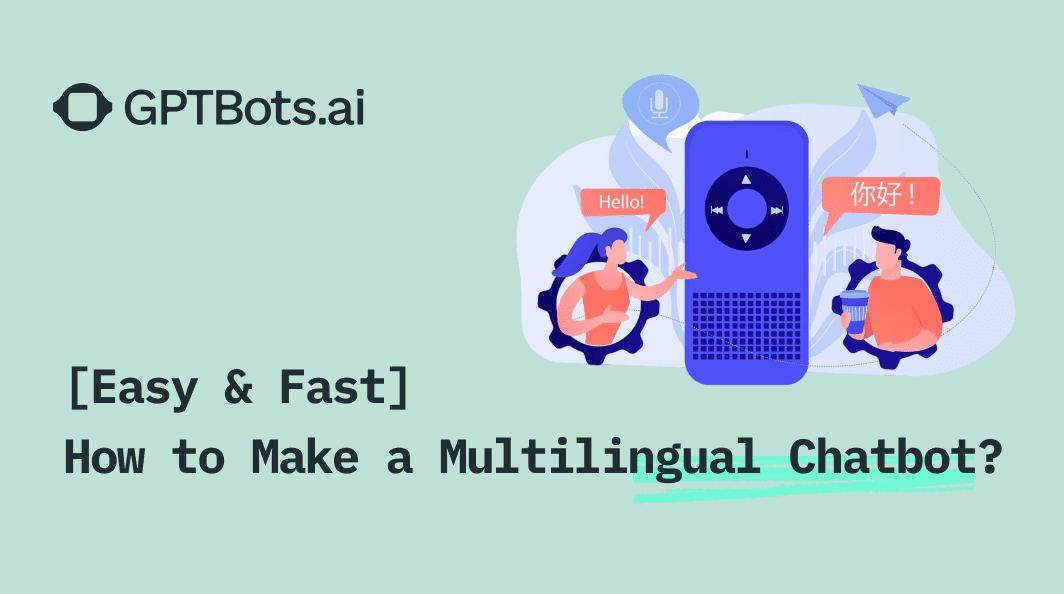
Part 1: Can chatbot be multilingual?
Yes, chatbots can be multilingual. There are multiple ways to create a multilingual chatbot. But first, let's clarify what a multilingual chatbot is.
A multilingual chatbot is a virtual assistant and conversational interface that can understand, process, and respond to customer queries in multiple languages. It can detect the customer's language, find the response from its pre-trained data, and then respond in the same language. It can also communicate with multiple customers at once in their preferred languages.
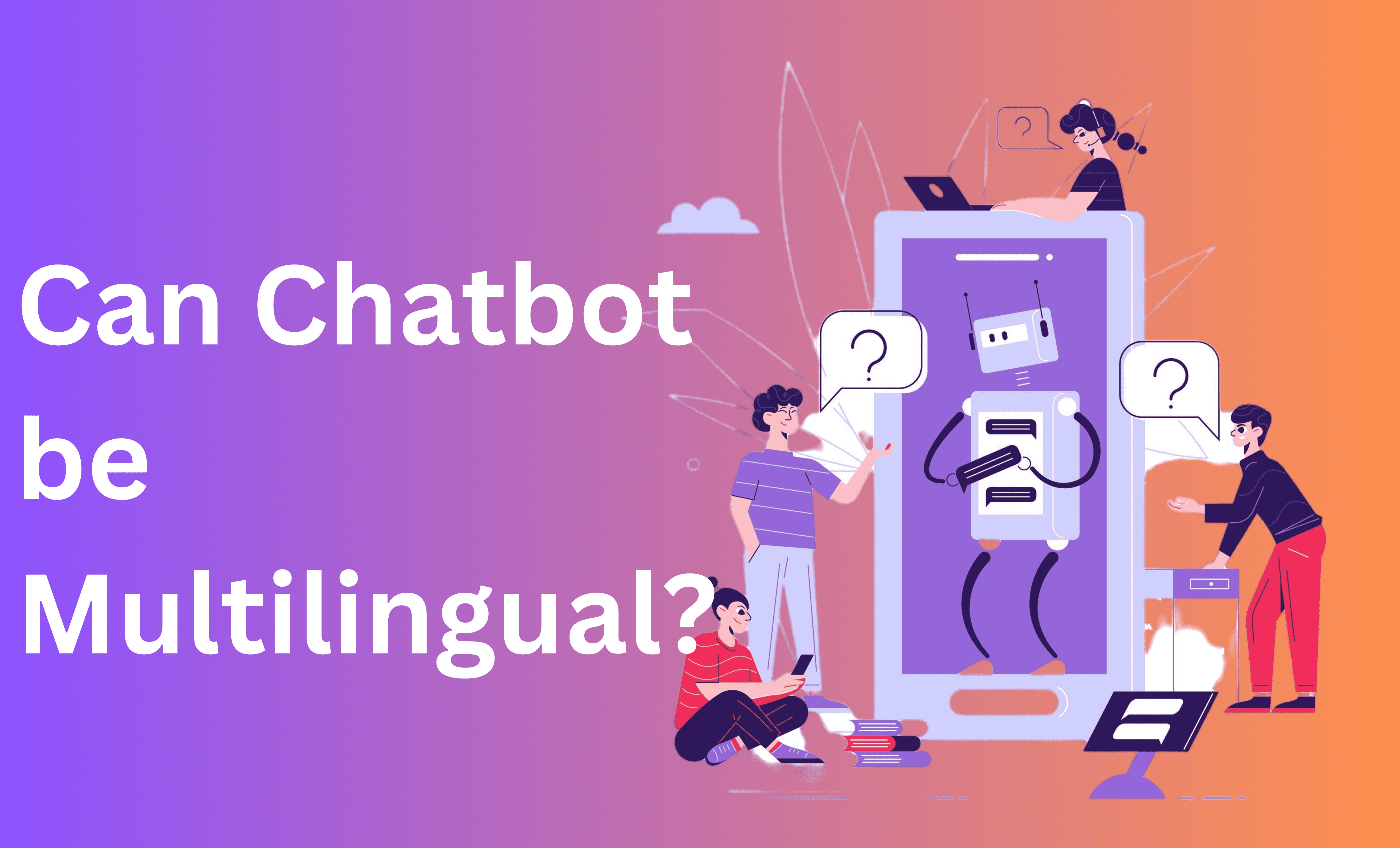
The three popular ways to create a multilingual chatbot are as follows:
- Train one chatbot to know multiple languages by providing training material in multiple languages.
- Build a separate chatbot for each language.
- Build an AI chatbot in one language capable of chatting in multiple languages.
Out of the three ways to create a multilingual chatbot, the AI approach is the best. It uses natural language processing (NLP) to determine language, analyze the text input, and provide accurate and context-aware translations and responses. Furthermore, you can train the bot in only one language (e.g., English) and leverage the machine translation to understand and respond in multiple languages.
Part 2: Benefits and Challenges of Building Multilingual Chatbot
74% of customers now opt for chatbots to get answers to simple questions. This makes multilingual chatbots essential for businesses that are dealing with global customers. However, it is important to understand the perks and limits of a multilingual chatbot.

Benefits of Multilingual Chatbot
- Better Customer Reach: It empowers businesses to globalize and improve customer reach. They can engage with diverse audiences and break down the language barriers.
- Enhanced Customer Experience: It provides customers with support in their native language. They receive the personalized support they are looking for, which significantly enhances their experience, increases their satisfaction, and fosters trust. In fact, 75% of customers acknowledge that localized content elevates customer engagement.
- Better Customer Support: 88% of customers have the opinion that good customer service increases the chances of more purchases. A multilingual chatbot provides 24/7 personalized customer support and helps increase customer retention.
- More Conversion Rate: It helps customers get responses in their preferred languages. This helps them make a purchase decision and leads to a higher conversion rate.
- Competitive Edge: It gives businesses a competitive edge, as customers will find them more approachable and reliable. This also increases customer loyalty and brand preference.
- Cost-Efficiency: Instead of hiring human support agents in multiple languages, a multilingual chatbot can save costs by automating support operations and reducing manual operational loads.
- Scalability: It makes it easy to scale customer support as the business grows in terms of both the number of customers and geographical locations.
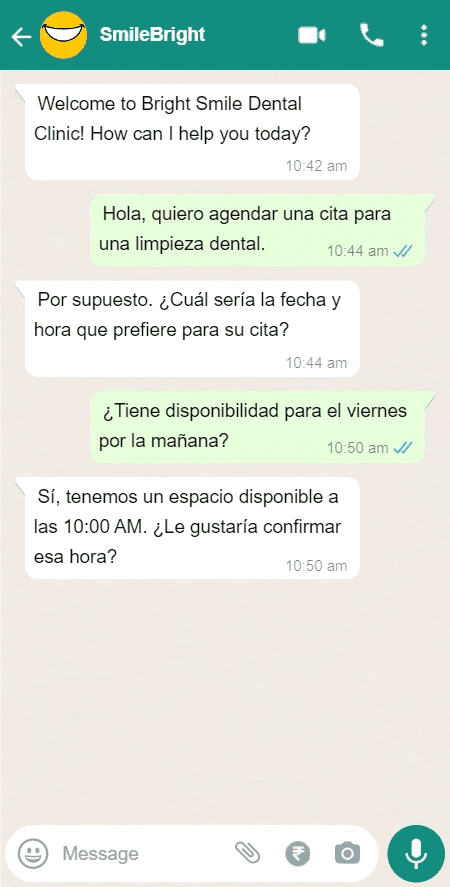
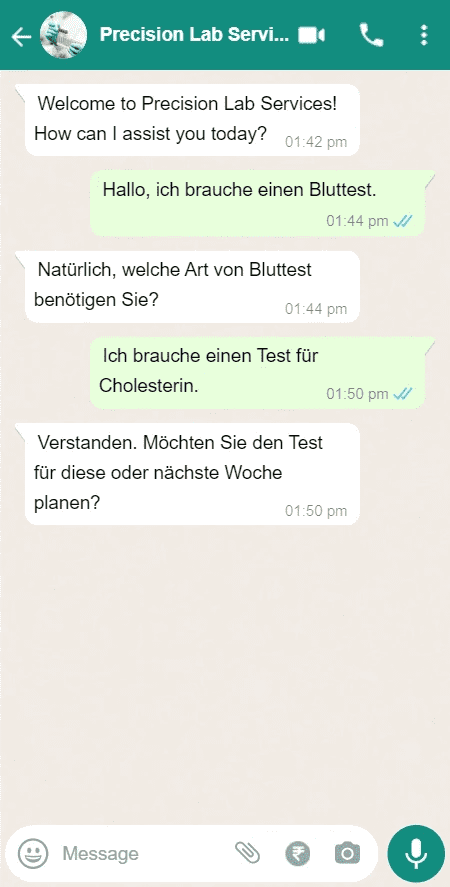
Challenges of Multilingual Chatbot
- Linguistic Variations: Almost all languages have linguistic variations and idioms that may not translate accurately.
- Training Data: The success of a multilingual chatbot is highly dependent on the quality and breadth of its training data. Obtaining and processing comprehensive datasets that reflect various language expressions and dialects is a significant challenge.
- Translation Accuracy: Ensuring translation accuracy across different languages while maintaining the original intent may be challenging.
- Multilingual Human Review: Need more human staff to review and optimize responses in multiple languages.
- Data Privacy and Compliance: Different countries have different data privacy laws, which are essential to follow.
- Maintenance and Updates: To keep the multilingual chatbot accurate and up-to-date, regular updates are required with new training material and optimization with new technological advancements.
Part 3: How to Make Multilingual Chatbot Easily
You can easily build a multilingual chatbot empowered by AI with GPTBots.
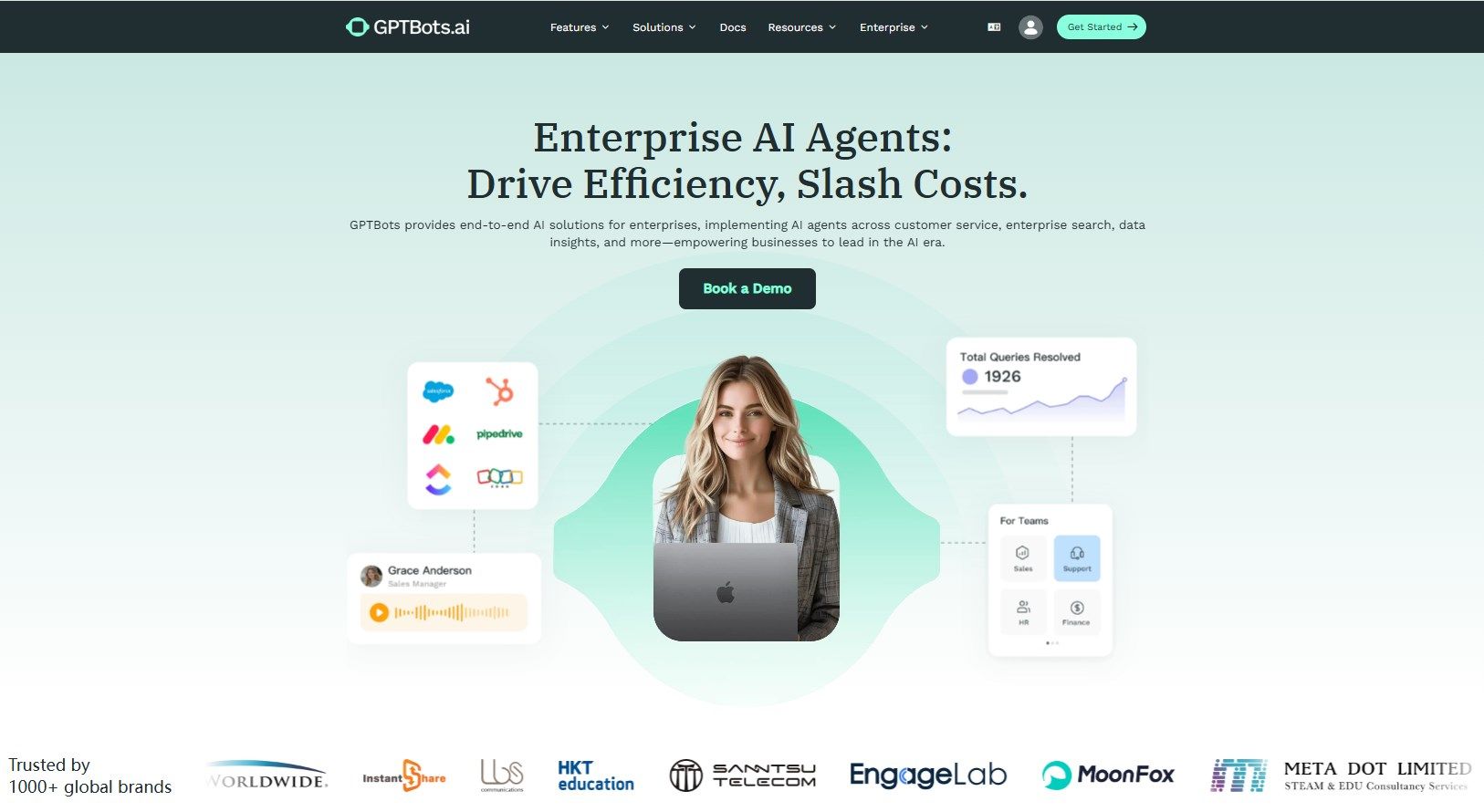
GPTBots is a powerful chatbot builder platform for businesses. It provides a web-based, no-code interface to build a full-fledged chatbot. Being AI-powered, it can understand and communicate in multiple languages. All you need to do is train the bot with your corporate data in one language only. Afterward, it will serve as your multilingual chatbot to meet your business's global needs.
The key features of the GPTBots platform are as follows:
- Easy-to-use, no-code, and web-based interface.
- Build a single chatbot with proficiency in 90+ languages.
- Train chatbot with the company's knowledge base, like FAQs, PDFs, spreadsheets, URLs, and more.
- Support inputs from customers in the form of text, images, audio, videos, etc.
- Deliver accurate responses to customers.
- Prebuilt AI Agent templates to build a chatbot in minimal time.
- Flow-based bot creation for complex processes.
- Switch from chatbot to human support easily.
- Publish chatbot to multiple channels, including WhatsApp, DingTalk, Slack, Discord, Telegram, and more. Get Started For Free
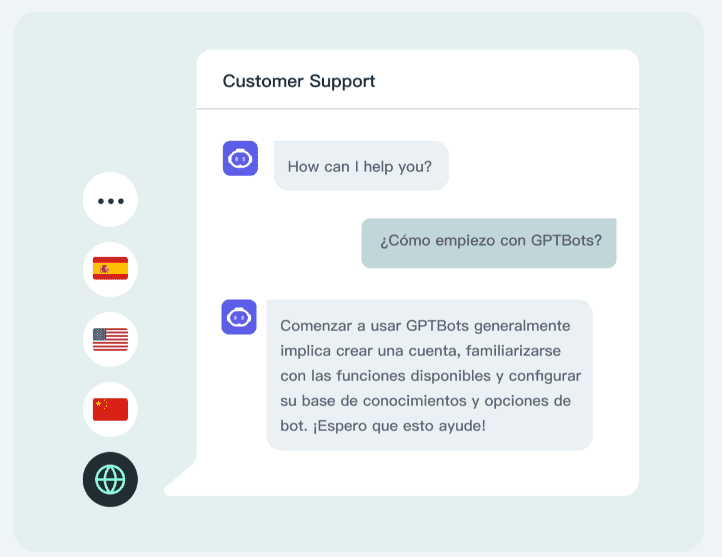
In short, GPTBots offers an advanced bot creation platform to build a multilingual chatbot with AI technology.
Feel impressed? Here's how to make a multilingual chatbot with GPTBots:
Step 1. Go to the GPTBots.ai website and create an account.
Step 2. Click "New Agent" from the home screen and choose a pre-designed template or "Create from Blank".

Step 3. Configure the Agent's settings, like the LLM model, response length, and other details.
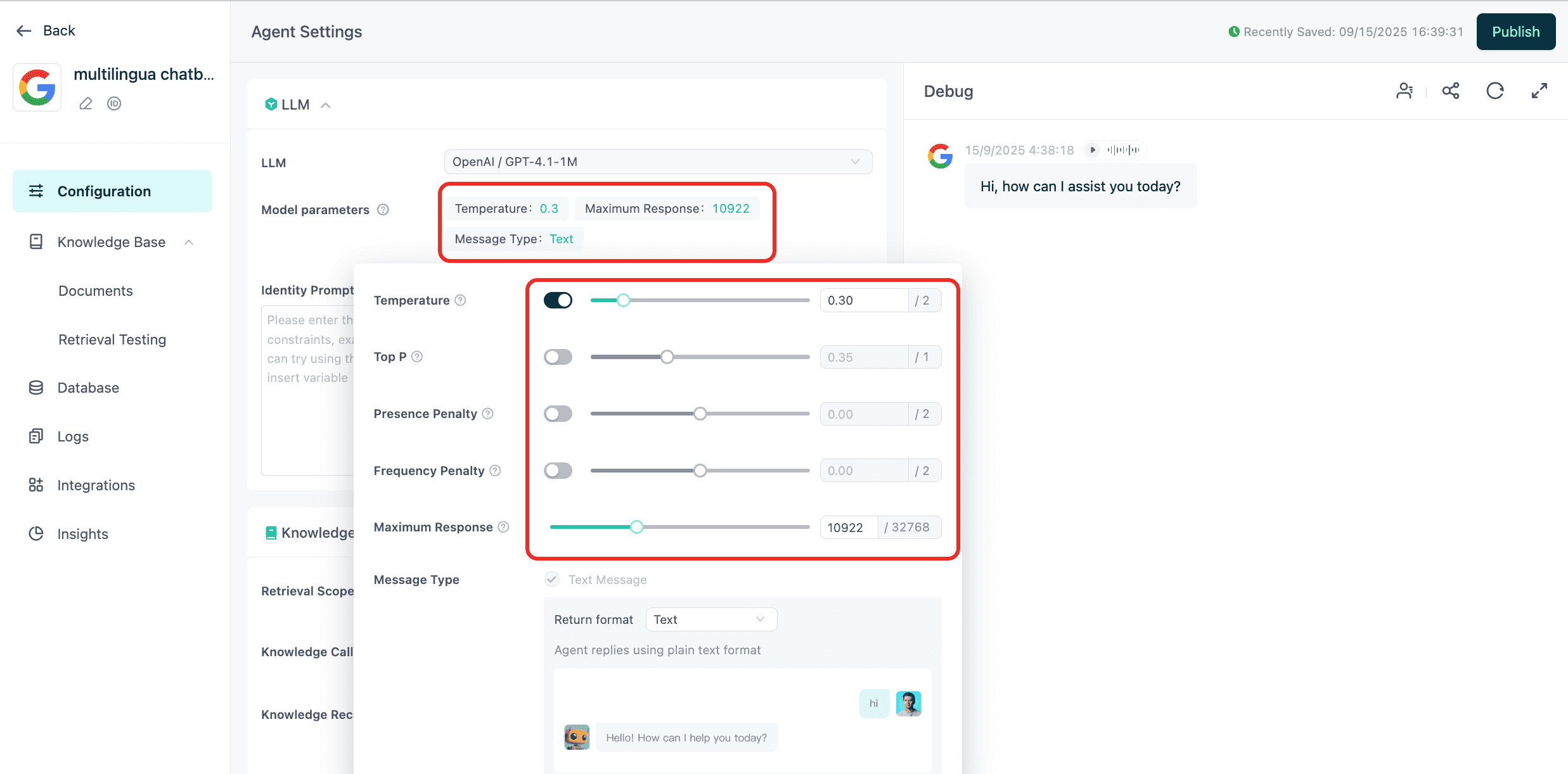
Under the "Identity Prompt", provide complete details of the AI Agent's role, tasks, constraints, skills, etc.
Step 4. To train the Agent with the corporate data, click Knowledge > Documents and upload your corporate data in the form of files, spreadsheets, website URLs, etc.
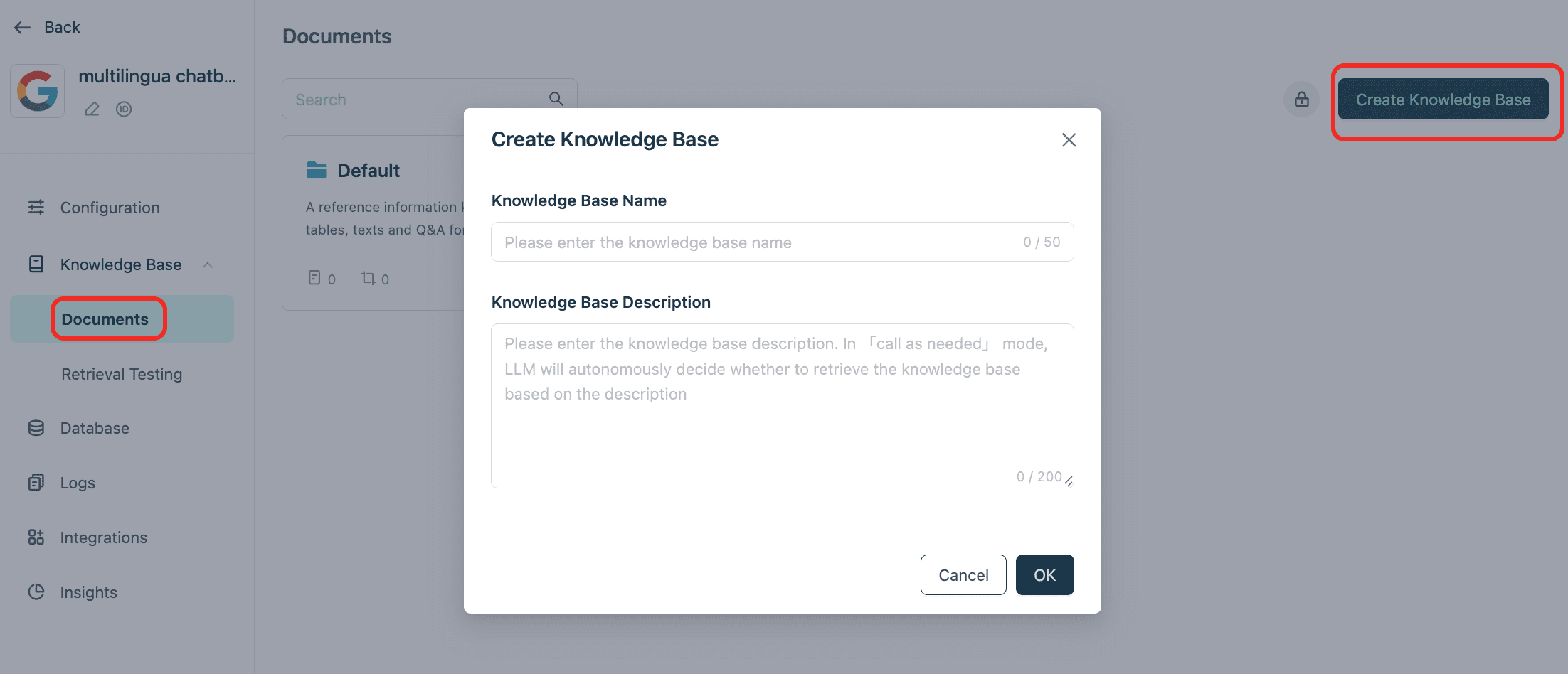
After training the AI Agent, click the "Retrieval Test" option to test the bot outputs and make changes if required.
Step 5. You can enhance the Agent's capabilities by integrating prepared APIs as tools, like scheduling appointments, etc. Alternatively, you can integrate GPTBots read-to-use tools, such as WhatsApp API Message, Email Sender, and more.
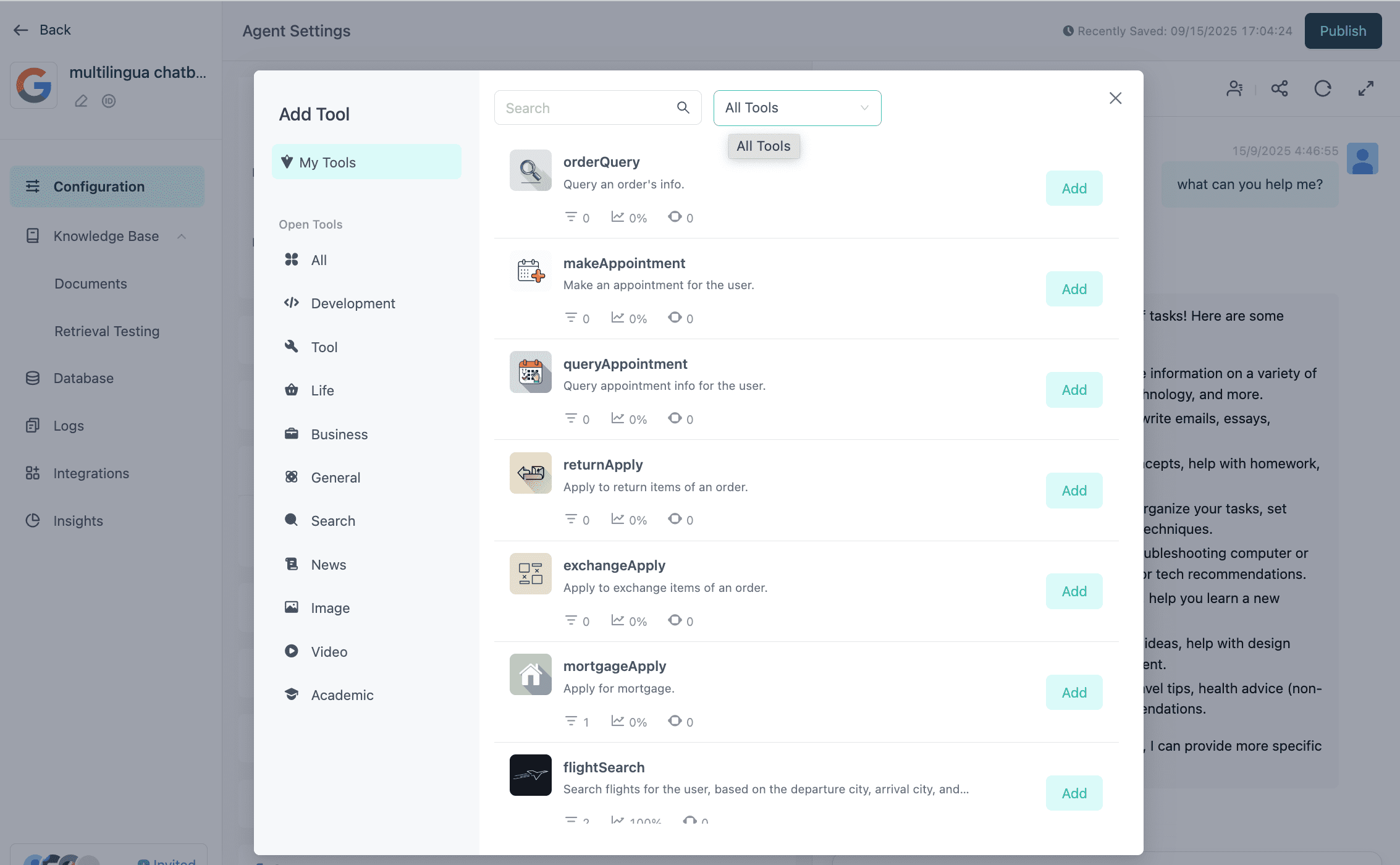
Step 6. After the AI Agent is built, click "Integrations" and publish the multilingual chatbot in your preferred channel, like Discord, WhatsApp, and more.
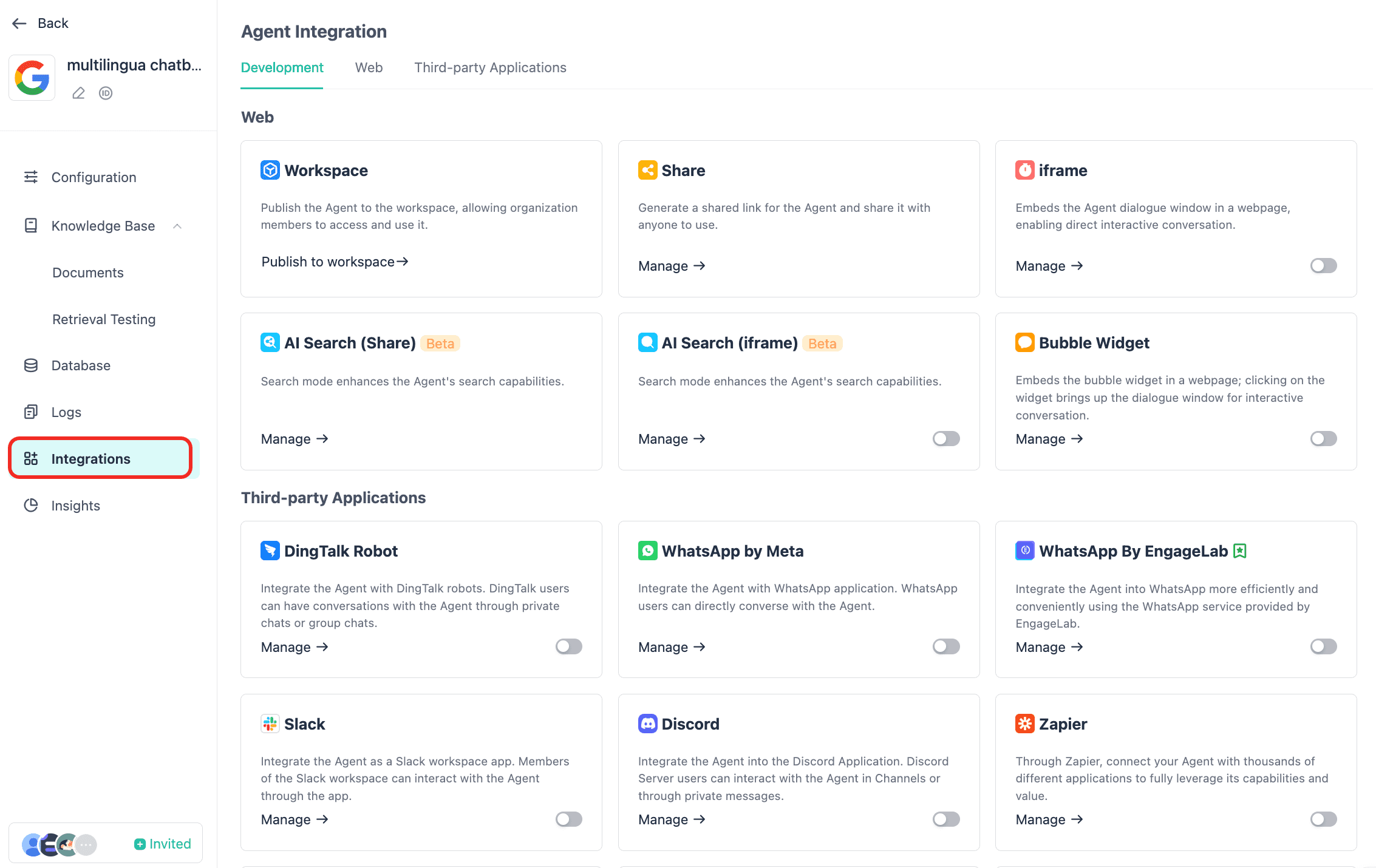
Now that you have created and published the chatbot, customers can use it in their preferred language and get automated assistance.
So, that's how you can create a comprehensive multilingual chatbot with the intuitive approach of GPTBots.
Part 4: Best Practices for Multilingual Chatbot
Now that you have learned how to make a multilingual chatbot, let's quickly shed light on a few effective best practices for multilingual chatbots:
- Continuous Training: Update the training content of multilingual chatbots regularly. This involves both updating the existing content and adding new content where required.
- Monitor Performance: Track the bot's performance using customer feedback and other analytics.
- Refine Responses: Have human agents review and refine responses. Try to use native speakers for this purpose.
- Compliance: Ensure that the chatbot complies with regulations in all operating regions.
Building a multilingual chatbot is one thing, but ensuring it delivers accurate responses is also important. Therefore, businesses should spend proper time and resources to optimize the bot's performance.
Conclusion
According to Salesforce, 77% of customers believe that chatbots will change their expectations about companies in the next five years. Therefore, multilingual chatbots are not a choice but a necessity for businesses to expand their reach and remain competitive. With GPTBots, you can easily create an AI-powered customized multilingual chatbot for your business by training the bot in only one language.
So, why think more? Sign up with GPTBots and follow the above steps to build a full-fledged multilingual chatbot.
Discover how GPTBots can simplify and revolutionize your business today.
- How to Make a Discord Bot Without Coding
- How to Create a WhatsApp Bot in 5 Minutes! (Just 3 Steps)
- How to Build a FAQ Chatbot Without Coding in 5 Minutes!
- [100% Working] How to Build an AI Chatbot for Telegram Without Coding
- What Are Slack Bots & How to Create a Slack Bot
- https://www.gptbots.ai/blog/chatbot-for-line
- Chatbots in Healthcare: Top 10 Use Cases and Benefits







